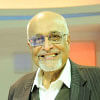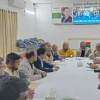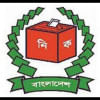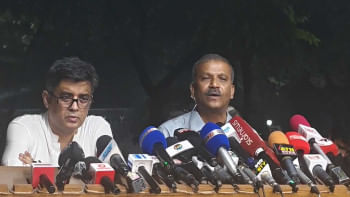The plausible future facing the country

This is the second instalment of a three-part series based on a foresight analysis centred on Bangladesh's transition, delving into the plausible future scenarios that may unfold over the next few months.
Part 1: A unique approach to looking at the future
"Hindsight is the best insight to foresight."
In the first part of this series, we outlined the analytical framework and methodology behind this foresight exercise—an effort to understand what the articulation of a minimum working consensus on reforms could look like in the lead up to national elections in Bangladesh. Through this exercise, 34 drivers of change, i.e. the forces instigating a trend, were identified, comprising 13 economic and 21 sociopolitical drivers. Each driver was scored in two rounds by the 16 experts across three dimensions—certainty, criticality, and relevance to the articulation of a reform consensus in Bangladesh over the next few months. As no single driver stood out in particular, the experts chose to consolidate the most closely scored drivers into two composite drivers, each representing a bundle of related dynamics. The first, Economic Conditions, spans three interlinked issues: the cost of living; the availability of meaningful jobs; and levels of labour discontent. The second driver, Political Alignment, captures the degree of political consensus on reform sequencing, the electoral timeline, and the inclusivity of the upcoming national elections—not just in terms of party participation, but also the freedom of citizens to vote without fear or intimidation.
Based on the composite drivers identified, the experts were tasked with developing four alternative futures for Bangladesh over the next few months, leading up to the national elections. The remaining drivers of change identified by the experts were considered as cross-cutting dynamics shaping each of the plausible future scenarios wherever relevant. Figure 1 presents a quick overview of the scenarios developed. It is worth noting that all scenarios are anticipated, and the coming reality is likely to be a mix of these scenarios.
Scenario 1: Political stalemate amid economic decline
This is a scenario in which both political and economic outlooks deteriorate in the period leading up to the national elections. During this period, the cost of living in Bangladesh has soared, while job creation has slowed. Global issues such as continued tariffs and tightening economic conditions further exacerbate the grim outlook. Labour unrest intensifies against the backdrop of bleak economic conditions while the private sector grows increasingly risk-averse and investment decisions get delayed.
The political landscape mirrors this economic outlook. Major political parties remain divided on the inclusion of the previously ousted party in the upcoming national elections. There is no clarity regarding the timeline for the national elections. Moreover, a working consensus among major political actors on the scope, sequence and pace of reforms remains elusive. As such, the overriding priorities become restoring law and order and accelerating convictions of the former ruling party leaders, including the party's head.
In this context, the interim government has become highly "person-oriented" with low/weak negotiating power. This means that the chief adviser of the interim government dominates the public narrative, while other advisers remain in the periphery or are not viewed in a similar light. As such, the bureaucracy poses significant resistance to consensus-building in this scenario.
Weak signals: The "weak signals" of change are defined as the first indicators of an event or trend that are not yet fully manifested, yet can point to larger implications at the national, regional and global levels. In Scenario 1, the interim government suffers from a lack of cohesiveness, which undermines its effectiveness and, consequently, struggles to reconcile competing political pressures. A weak signal in this case would be an accelerated rise in intolerance (including religion-based), moral policing, and violence that further fragments the social order in Bangladesh. As such, there is growing scrutiny of the chief adviser's credibility from various stakeholder groups, and there is an intensification of political pressure from parties seeking to expedite the national elections. While it is agreed that his credibility could facilitate a minimum working consensus on reforms or even a prolonged extension of the interim tenure, there must be a clear articulation of the interim government's goals. Much depends on the relationship between the chief adviser and the chief of army staff, which has become a moderating force in Bangladesh. On the regional front, there is further deterioration in the Bangladesh-India relationship, with additional restrictions being placed on economic relations. In short, Scenario 1 is characterised by reform fatigue setting in, driven by three converging points: economic, political and social unrest.

Scenario 2: Political stalemate in improved economic circumstances
This is a scenario in which Bangladesh staggers on a fragile equilibrium of an improved economic outlook but low political alignment. The cost of living is on the decline, while job availability grows, and organised labour unrest remains limited across the nation. Globally, remittance inflows remain steady, while trade tensions, including the US tariff policy, are expected to subside over the next few months. Meanwhile, the Russia-Ukraine war begins to slow down, shifting the attention of international development partners from defence spending to rebuilding infrastructure.
Despite economic gains, the political landscape remains divided in Bangladesh. There is no consensus among the major political parties regarding the scope, sequencing and pace of reforms. There is also no clear timeline for the national elections. There are persistent disagreements among major political parties over whether these elections should be inclusive, particularly regarding the inclusion of the previously ousted ruling party.
As such, there may be a rise in tension between parties that are "pro-substantive reforms prior to elections" and "pro-reforms essentially by elected parliament." Political parties that are "pro-reforms essentially by elected parliament" may concede on certain reform areas, but fundamental differences remain. On the ground, grassroots party cadres may resort to extortion, and significant agitation may be unlikely to occur.
Weak signals: In Scenario 2, the surge in remittance inflows continues. Leveraging improved economic conditions, the interim government will exhibit a strong bargaining power with the political parties to broker a "minimum working consensus" on reforms. There may also be continued vagueness about the national elections timeline. On the global front, we may witness improvements in the global economy with the subsiding of the global tariff war and the de-escalation of the Russia-Ukraine war.
Scenario 3: Strong political alignment amid adverse economic situation
In Scenario 3, Bangladesh experiences an unexpectedly high alignment among political actors amid a deteriorating economic situation. Inflation continues to rise, eroding purchasing power, while both domestic and foreign investment remains low. Confidence within the private sector falters, and labour unrest intensifies. The economic deterioration exacerbates social unrest despite the political landscape appearing united.
In the political landscape, a key driver is the strong alignment between the chief adviser of the interim government and the chief of army staff, which serves to converge the stances of political parties around the inclusion of the past ruling party in the upcoming national elections, clarity on the elections timeline and scope, sequence and pacing of reforms.
As such, there are no questionable judicial processes regarding the trial of the former ruling regime in this scenario. While a referendum on amending the constitution remains unlikely, not banning any political parties from the upcoming national elections and having no judicial controversies will signal a stable and high level of political alignment.
With the high level of political alignment in this future scenario, the possibility of brokering a minimum working consensus around reforms is high. However, a referendum on amending the constitution remains unlikely. This is due to the ambiguity surrounding the modus operandi regarding reform implementation.
Weak signals: Within Bangladesh's political landscape, a signal towards improved political alignment would be to ensure credible judicial proceedings before restricting any political party from the electoral procedure. Even with improving political alignment, the growing spread of disinformation, especially on informal social media, risks deepening the trust deficit between the public and media. On the international front, rising geopolitical tensions in both the regional and global space could exacerbate the grim domestic economic outlook. Against this backdrop, a telling signal could be the decision to expedite national elections in response to growing frustration among the masses, including the private sector in Bangladesh and international calls for a "democratic reset."
Scenario 4: Strong political alignment in improved economic circumstances
Scenario 4 is the most optimistic of the four scenarios, characterised by substantial political alignment and improved, stable economic conditions. However, this situation also has its complexities.
In this scenario, there is an improved availability of jobs, as well as a reduced cost of living, resulting in reduced labour unrest in the manufacturing sector across the country. Moreover, the resentment among farmers has softened due to market stabilisation, but they remain wary of the upcoming summer.
In Scenario 4, there is a minimum working consensus on the scope, sequence and pace of reforms, and a clear timeline for the national elections. Moreover, there is a separation between the past ruling regime and its leadership, which leads to a trial of its high-level leadership, paving the way for the inclusion of the past ruling party in the upcoming national elections.
Weak signals: An improved economic environment may create complacency, paradoxically resulting in a decline in perceived urgency for political or structural change, which can dampen momentum for reforms and/or national elections. The separation of the ousted autocratic political regime from its current leadership enables the party to contest the upcoming national elections. Civil society organisations (CSOs), meanwhile, may begin playing a more assertive role, with some acting as watchdogs, scrutinising the interim government. In contrast, other CSOs engage closely with the interim government to provide technical inputs. In contrast, international development partners take on a "wait and see" approach. They remain focused on the medium to long-term outlook, ultimately prioritising long-term political relationships over short-term commitments. Consequently, their role in shaping reform trajectories may weaken.
Together, these four scenarios reveal plausible future events that may unfold for Bangladesh in the months ahead, leading up to the national elections. The scenarios derived from this foresight analysis describe how varying combinations of political alignment and economic conditions may play out in the process, including the weak signals that can serve as cues for early action and the challenges that accompany each future. The final segment of this foresight series will confront a critical question: what if the most plausible future is also the one that is not desired? In the final instalment, the focus will shift to examining the informal, shifting networks of influence and power that stretch from the government to political parties and even non-state actors, including civil society. To ensure that Bangladesh is moving not just towards what is likely, but towards what is needed, understanding the "wheel within the wheel" will be critical.
Debapriya Bhattacharya is distinguished fellow at the Centre for Policy Dialogue (CPD).
Towfiqul Islam Khan is senior research fellow at CPD.
Najeeba Mohammed Altaf is senior research associate at CPD.
Views expressed in this article are those of the authors only and do not necessarily reflect the views of CPD or any other organisation with which the authors are associated.
Follow The Daily Star Opinion on Facebook for the latest opinions, commentaries and analyses by experts and professionals. To contribute your article or letter to The Daily Star Opinion, see our guidelines for submission.



 For all latest news, follow The Daily Star's Google News channel.
For all latest news, follow The Daily Star's Google News channel. 









Comments